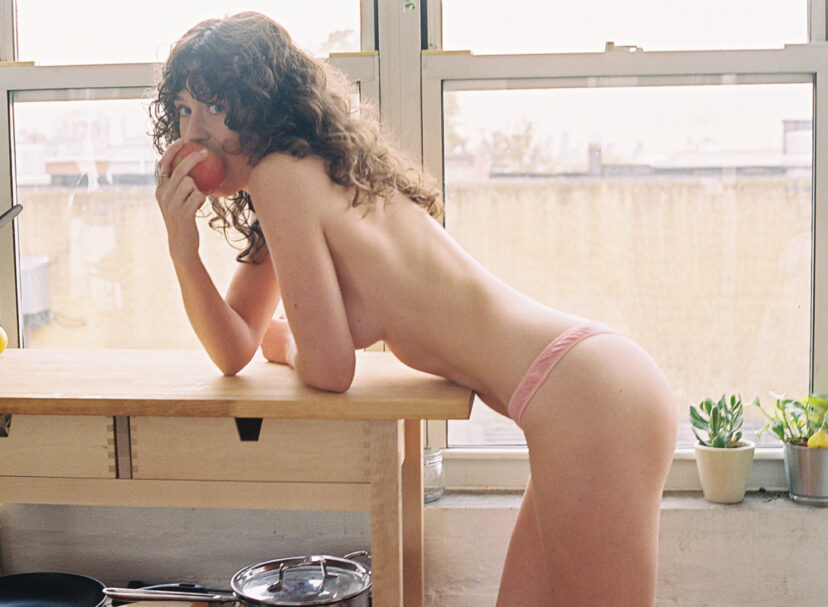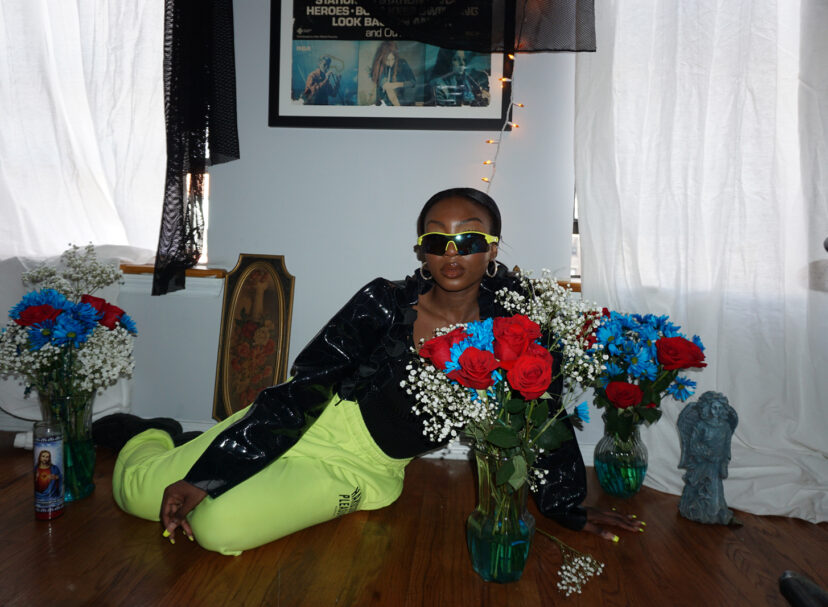Text and Interview: Monsieur Jerome
Photo: Elisabet Davids
You have probably heard of Nicolas Baurain, but if you haven’t you’ve almost definitely seen or worn one of his creations, as he has collaborated with just about everyone of consequence in the fashion world.
We have been lucky enough to arrange a meeting of the fashion minds for our feature on the veteran designer and have his conversation partner be fashion blogger par excellence Jerome Dalmeida, who you may know better as a Monsieur Jerome.
In the course of the interview Baurain tells us what sets his label apart, why now was the right time for him to launch it, what inspired it, and how the new label synthesizes all of his aesthetic obsessions.

You have been designing accessories for now more than 15 years from classic French houses (Guy Laroche, Carven) to international powerhouse including Jimmy Choo, Alexander McQueen and Ralph Lauren. Tell us more about your career.
After studying fashion in Paris at E.S.A.A. Duperré, a very “arty” school where we were creatively uncommonly free, I started my career working in womenswear, both Haute Couture and Ready-to-Wear. It’s only when working for my second company that I was offered to design accessories for the first time. I enjoyed it right away and decided to take evening classes to improve my technical skills. I found in this new challenge a balance, half-way between fashion and industrial design, almost like creating a sculpture.
I then collaborated with both very creative companies (including Alexander McQueen, my favorite designer since I was a student) and corporations, which was quite complementary, as the merchandising aspect is essential in the accessories business.
How do you get from designing for others to launching BAURAIN?
It all finally came together last year after a long process. I’ve always wanted to create my own label, but I don’t think I could have done it earlier. I’m sometimes on the low side, and usually like to evaluate situations before jumping into them. I feel that living abroad built me and helped me refining and structuring the message I wanted to deliver with the brand.
Looking at your portfolio and at your first collection, I can’t help but notice a clear visual departure. How did you shape Baurain?
A side of me really enjoy working for a label, playing with DNAs, reinterpreting codes and telling the story of a brand. But the other side needs freedom, in both design and strategy. After all those years, I realized that I tend to come back to the same design elements and inspirations. BAURAIN’s story became very clear to me, as if all the aesthetics obsessions I’ve had for years were all merging.

In a time where genderless has taken a whole other meaning, I felt it was a perfect moment for a unisex label to be born and to make a true statement.


Where did you find your inspiration?
Creatively, movements such as Brutalist architecture and Bauhaus have been leading my work for a long time now. Bauhaus inspired the brand symbol, and Brutalism the pace of the collection. The concept of blending the three key primary shapes of geometry (circle, square and triangle) will always be part of the goods’ detailing and design along collections.
Artists and music, Heloise Letissier’s (Christine & The Queens) and Tilda Swinton’s allure and magnetism, Planning to Rock’s “Let’s talk about gender” soundtrack, to name just a few, have been very influential during the concept emergence.
Did you have a specific customer in mind?
Yes definitely. Someone who cares for quality and stands for singularity. The idea was not to do again the same bag already out on the market, and just put the brand’s name on it. The accessories business is somehow saturated, with plenty of options. I wanted to offer a product aesthetically different at a reasonable price, between contemporary and high end, as I think there is definitely a client who can’t afford luxury, but still appreciates its codes and feel.
I remember our conversations early on when you were drawing your collection and how important creating a genderless collection was from beginning. What made you care so much about that?
In a time where genderless has taken a whole other meaning, I felt it was a perfect moment for a unisex label to be born and to make a true statement. The masculine-feminine trend has been around since a long time from The “garçonnes” movement in the 1920s, Yves Saint Laurent women’s smocking in the 1960s, Jean-Paul Gaultier’s men skirts in the mid 1980s, or Calvin Klein CK one fragrance with its very androgynous and genderless concept. The recent evolutions made me realize that it was about time, that we were ready to embrace it, buying, wearing and collecting.
The men have been also buying more accessories over the last decade, and what we used to call a “niche” has become a huge segment with a proper range of brands and products. BAURAIN was created to fill that gap and talk also to men.
Did you feel you needed to differentiate women’s accessories codes and functionalities from men’s?
The brand and the design detailing are unisex. I wanted the global image to be genderless, whether it was the functions or sizes, with both men and women able to carry the same design and “share” a label.
It was also crucial that the color palette reflects the genderless statement of the brand. I carefully picked tones that can easily fit different dress codes and genders.



There is a rawness in BAURAIN that I find very seductive. Your bags have simple and generous shapes, the leathers are smooth while keeping a being sturdy and masculine. How did you balance those opposites?
I guess it’s a good definition of me! (laughs) I’ve always had a masculine hand on women’s bags, and a rather fashion one for men’s. But I could have never committed working for a men’s brand, I felt I would be missing out the fun part. Women’s side of the accessories business offers much more creative freedom (and madness!).
You produced everything in Florence. Was it an important criteria for you?
Very. I built my career working with Italian factories, and I have always respected their expertise. The “Made in Italy” label is a sign of quality and heritage, two criteria that I wanted to be part of BAURAIN. I’ve always liked (and definitely envisioned for the brand) a sharp and modern design, made with a traditional craftsmanship.
Was designing BAURAIN a different experience from your previous works?
I was so used to work with the brand’s DNA, a team, some archives, a ready-to-wear collection, that this time was a real blank page. The brand vision and identity, the products, all needed to be created. I really enjoyed every single step of the process.
It also gave me the unique opportunity to define the face and the silhouette to emphasize the bags, and even if we don’t offer clothing (yet!), our ad campaign had to translate a lifestyle brand.
I love the lovely coincidence between Baurain (which by the way is also your last name) and your attachment to the Bauhaus movement.
Haha maybe it’s not! The movement means “school of building” and was exclusively applied to object design, so it could make sense! My work is now more minimal, focusing on the essence of the bags’ constructions. Finding the right lines of a volume is for me an endless game of excitement. I love the experimental aspect of design, it’s almost like working in a laboratory.
Although the proper existence of the BAUHAUS school lasted only for a few years, its aura and influence are timeless. Let’s wish the same success to BAURAIN!

